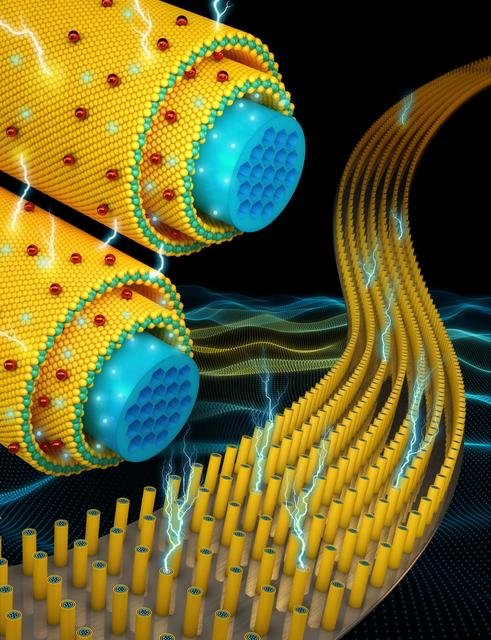Scientists have proposed a method for creating flexible supercapacitors that can fully charge a smartphone in seconds

A team of scientists from the Center for Nanotechnology at the University of Central Florida (UCF) has developed a new method for creating flexible supercapacitors. They accumulate more power and without prejudice to withstand more than 30 thousands of charging cycles. A new method of creating nanokondensatorov can become a disruptive technology in the production and smartphones, and electric vehicles.
The creators believe: if you replace the batteries with new nanokondensatorami usual, any smart phone is fully charged in seconds. The owner can not think of every few hours about where he would charge the smartphone: the device will not be discharged within a week.
Every owner of a smartphone is faced with an unsolvable problem: approximately 18 months after the purchase of an average battery holds a charge less and less time, and then completely degraded. To solve it, scientists are exploring the possibility of nanomaterials to improve ultracapacitors. In the future, they can support or even replace batteries in electronic devices. To achieve this is quite difficult: ionistor to spend as much energy as lithium-ion battery, it should significantly exceed the usual battery in size
The team from UCF experimented with the use of the newly discovered two-dimensional material thickness of a few atoms - Dichalcogenides thin films of transition metals (TMDs). Other scientists have tried to work with graphene and other two-dimensional materials, but you can not say that these attempts were quite successful.

Two-dimensional transient dichalcog- materials - promising material for capacitive supercapacitor because of their layered structure and a large surface area. Previous experiments TMDs integration with other nanomaterials improved electrochemical performance of the first. However, such hybrids have not kept a sufficient number of charge cycles. This was due to a violation of the integrity of structural material at the joints with each other and chaotic assembly.
All scientists who somehow tried to improve the existing technology, wondered: "How to combine two-dimensional materials with existing systems." Then the UCF team has developed from a simple chemical synthesis approach, with which you can successfully integrate the existing materials with two-dimensional Dichalcogenides metals. This was stated lead author Eric Young.
Young's team developed supercapacitors, consisting of millions of nanoscale wires coated Dichalcogenides transition metals. The core of high conductivity ensures rapid electron transfer for fast charging and discharging. Uniform jacket of two-dimensional material is characterized by high energy intensity and power density.
Scientists believe that the two-dimensional materials open up broad prospects for energy storage elements. But as long as researchers from UCF is not devised a way to combine the materials, it was not possible to realize this potential.
"Our material is designed for small electronic devices, surpassed the usual technology in the world in terms of energy density, power density and cycling stability," - said Dr. Nitin Choudhary who conducted a number of studies.
The cyclic stability of the number of times the battery can be charged, discharged and recharged before it begins to degrade. Modern lithium-ion batteries can be recharged about 1500 times without major disruptions. The newly developed prototype supercapacitor can withstand several thousand cycles. Electric double layer capacitors with the two-dimensional shell is not degraded, even after it recharged 30,000 times. Now Jung and his team is working to patent a new method.
Nanokondensatory can be used in smart phones, electric vehicles, and in fact - in all electronic devices. They could help manufacturers to benefit from the sharp changes in power and speed. Since the electric double layer capacitors are flexible, they fit for wearable electronics and technologies.
Despite all the advantages of the new supercapacitor, the development is not yet ready for commercialization. Nevertheless, this study can be another powerful incentive for the development of high technologies.
The scientific work is published in the journal ACS Nano October 12, 2016
DOI: 10.1021 / acsnano.6b06111
Looking forward to seeing where this goes... but from my perspective it looks like there is a TON of work needed before commercialization would be possible. Lots of issues with creation of heat.
that's cool stuff. Can't wait to buy one.
I agree